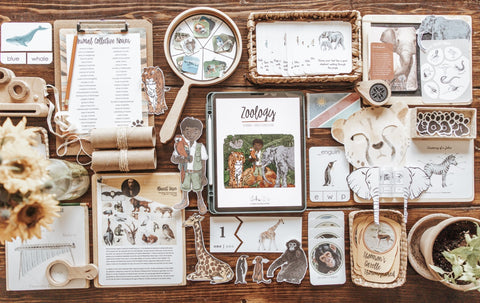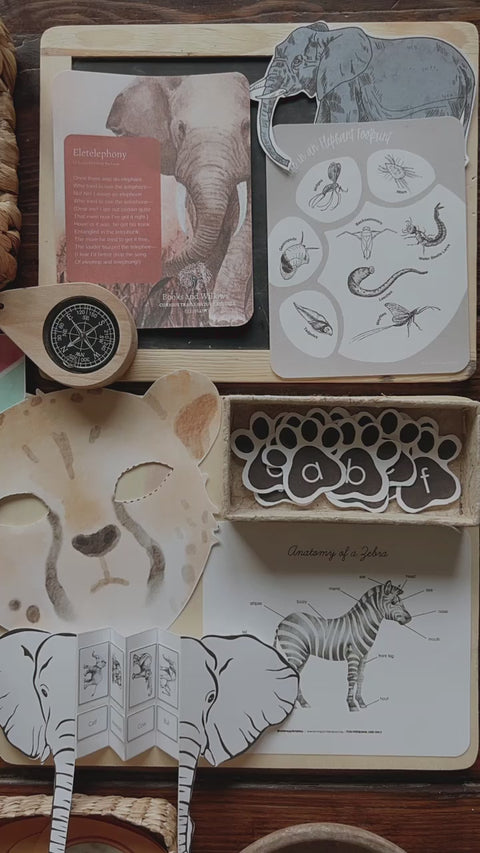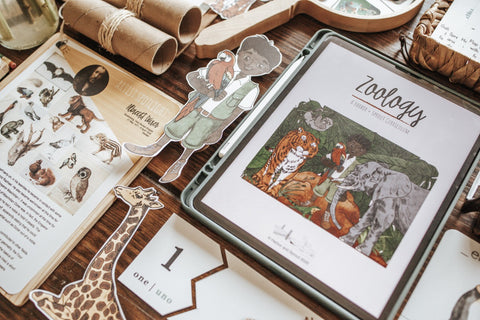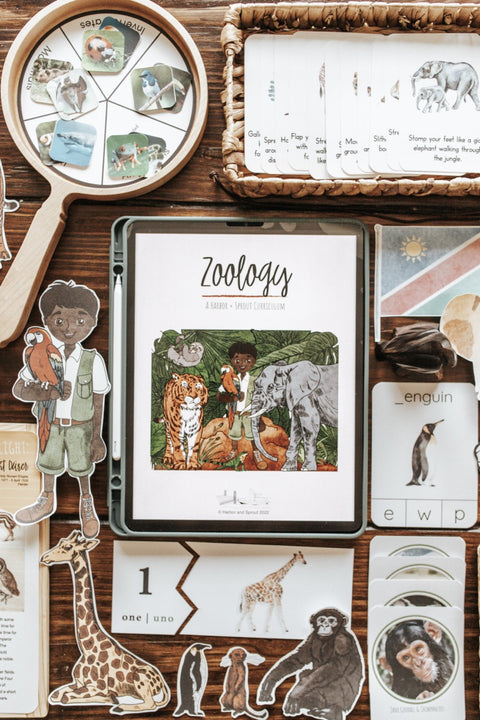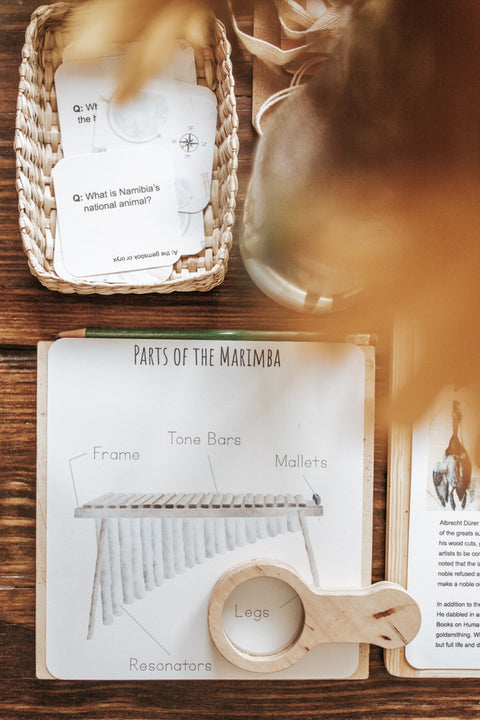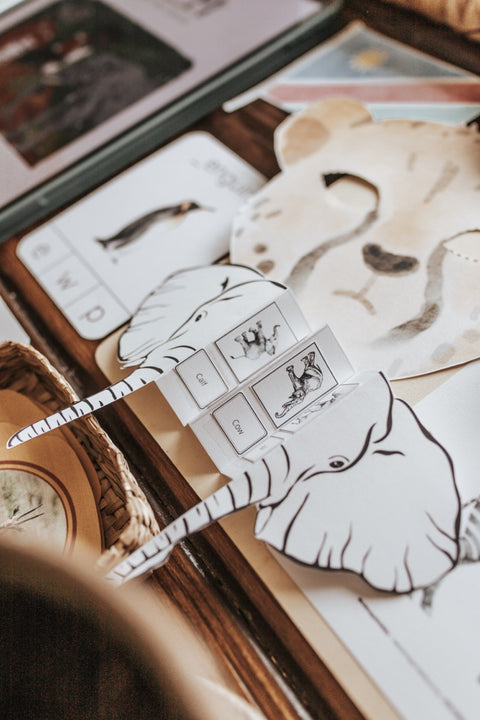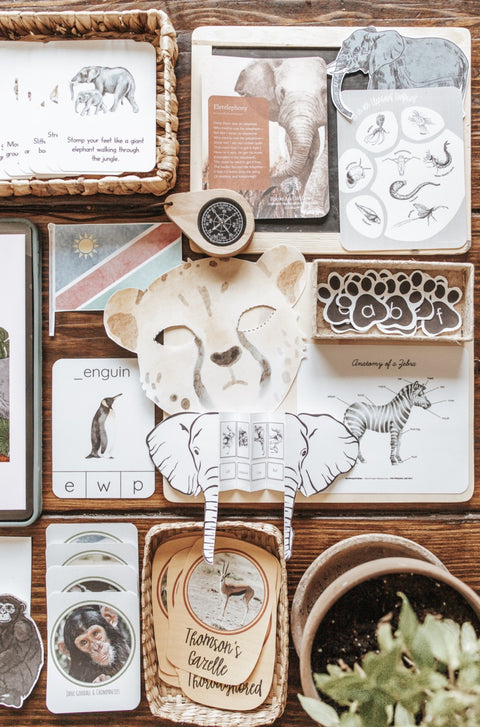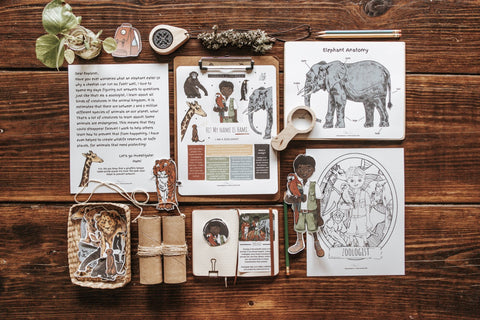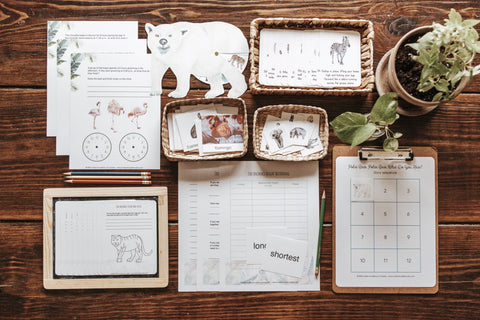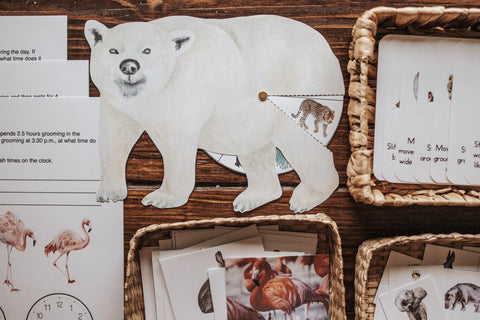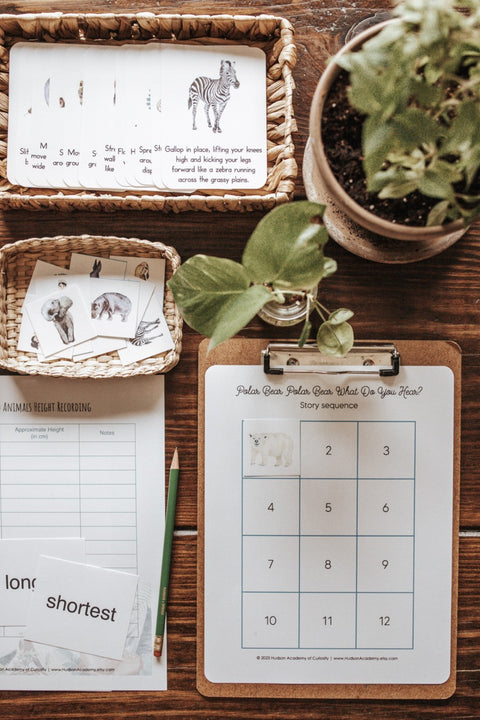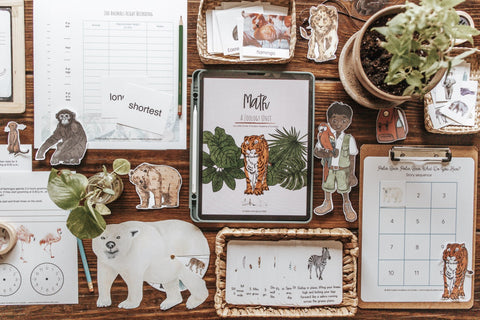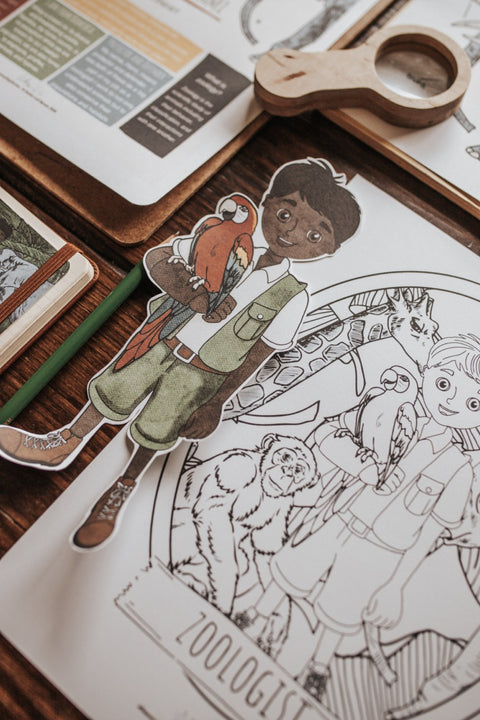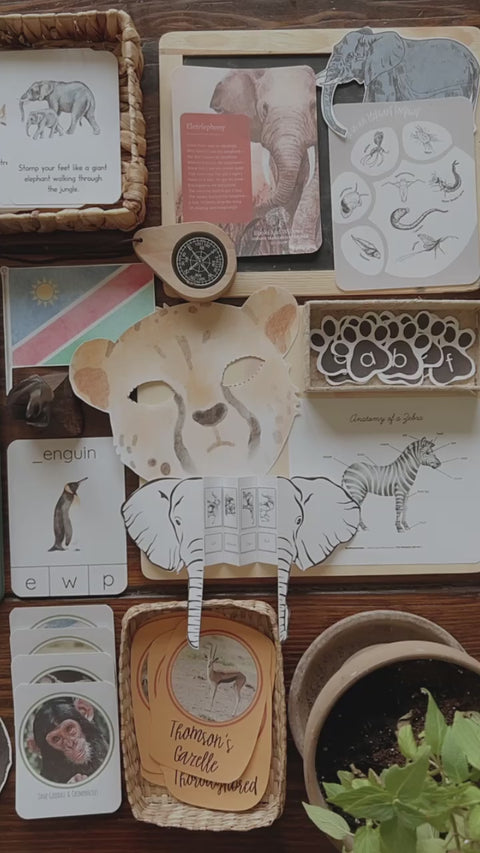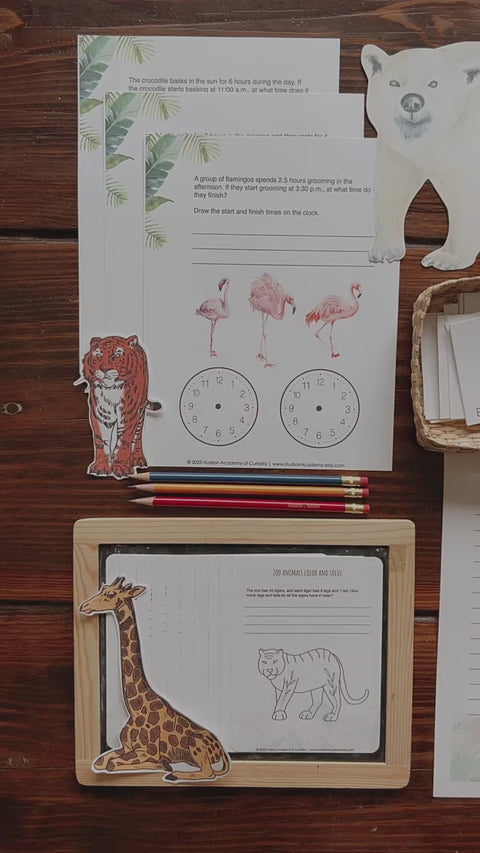Harbor and Sprout
Zoology Patchwork Study
Welcome to the Harbor + Sprout Zoology Patchwork Study, the June 2023 release of our original elementary-level homeschool unit study curriculum. This unit study features 4 weeks of lesson plans and materials covering all 9 of our core subjects and a playful supplemental section of thematic activities. This unit study is meant for use by children ages 3-12.
This unit is delivered via a secure link as a digital download.
CONTENT:
Handbook
Daily, weekly, and monthly planning pages
Book list including stories, poems, and field guides with recommended ages, subject correspondence, and brief summaries for each title
Lesson plans for 4 levels of learning
Family read aloud with discussion guide and recipe
Character kit- new monthly character illustrated by Stephanie Groves to act as your guide through the unit
Science
Week 1: What is Zoology? Zoology is a special science that helps us learn all about animals. Learn how zoologists classify different types of animals, and practice being a zoologist yourself by studying the anatomy of mammals and conducting an experiment.
Week 2: What are Vertebrates? Did you know that there are animals that don't have backbones? Have you ever wondered how fish breathe under water? Become an expert in sea creatures while studying vertebrates and conducting an experiment about respiration.
Week 3: What is a Bird? Learn all about the unique characteristics of birds from their physical features, bight colored feathers, to their behavioral habits.
Week 4: What is the Difference Between a Reptile and Amphibian? Reptiles and amphibians are often mistaken for one another, but zoologists know that they are actually two very different groups of animals! Learn the differences yourself by conducting experiments and analyzing different animals.
Nature Study
Week 1: Extraordinary Elephants- Join us on an exciting adventure to explore the amazing African savanna elephants and Asian elephants. Sharpen your observation skills with identification cards. Create your very own 'elephant footprint' hotel, and uncover the secret of how elephants keep cool in a heat loss experiment.
Week 2: Amazing Adaptations- Explore the unique adaptations of the elephant that help them thrive in their savanna ecosystems. Put your trunk skills to the test in our Elephant Trunk Relay challenge. Extend your studies by discovering the significance of the 'tortilla experiment'.
Week 3: Following Family- There's nothing more important to elephants than family. Learn what it's like to grow up in an elephant family by following the life of a baby calf; from birth all the way to the time when he begins his own family!
Week 4: Never Forget- African elephants are not only one of the biggest animals on the planet, they have the largest brain! It's no wonder they're known for their amazing memory and sophisticated languageIs it true that elephants grieve or that they never forget? Explore these questions and more in this final week of our study.
Language Arts
Week 1: Wild Words- Grow your vocabulary by studying the -aw word family. Practice spelling, complete a word scramble, and stretch your creativity by writing a poem!
Week 2: At the Zoo- Read or listen to the poem "At the Zoo" by A.A. Milne. Enjoy a story teatime as you listen to the poem. Using the poem as inspiration, you can design your own zoo. Deepen your understanding by analyzing the poem, and practice your penmanship by tracing words and phrases from the text.
Week 3: Collective Nouns- Familiarize yourself with collective nouns used in everyday conversation, then further that knowledge by learning collective nouns used in reference to animals! Did you know that a group of butterflies is called a kaleidoscope of butterflies?
Week 4: Compound Words- What do the words jellyfish, merry-go-round, and ice cream all have in common? They are all compound words! Discover the definiton of and how to use compound words. Put your knowledge to the test with a matching card game and a guessing game!
Writing
Week 1: Create a Comic Strip- Graphic novels, comic strips, and comic books use words and pictures to tell a story. Comic strips use the dialogue and inner thoughts of the characters to relay the story line. This month you will get to have fun creating your own exciting characters and telling a story in the form of a comic strip.
Week 2: Character Development- One of the best parts of comics are the characters. Characters in comic strips and graphic novels always have very exciting, dynamic personalities and physical traits. This week you get to create some awesome characters!
Week 3: Writing Dialogue- One of the very unique things about comic strips and graphic novels is that the story is told by the characters talking to each other. With a comic strip, the actions and dialogue of the characters tells the story and describes what happens. It may take some practice to learn to write this way, but it is a fun, interesting way to write.
Week 4: Final Comic Strip- This week you get to complete your comic strip! You can make your comic strip as long or as short as you'd like! Be creative and have fun!
History
Week 1: The Great Migration- Every year in an area of East Africa, animals travel approximately 1200 miles in what is called the great migration! Discover who these animals are and why they make this great journey every year.
Week 2: Wild Mustangs of North America- When you think about the American old West, do you picture herds of horses running freely across the open prairie? If you do, you'll be happy to know that there are places in North America where wild horses, called mustangs, still run free today. Learn when, where, why, and how these magnificent animals came to be in North America!
Week 3: Friend of the Chimpanzee: Jane Goodall- Did you know that chimpanzees are considered to be one of the smartest animals in the world? Learn why zoologist Jane Goodall made a career out of studying these astute animals.
Week 4: Friend of the Crocodile: Steve Irwin- Crikey! There is much to learn about the world's most beloved "Crocodile Hunter". Don't let the nickname fool you; Steve Irwin's main focus was to protect crocodiles in the wild and educate people on these and many other fascinating animals.
Geography
Week 1: Namibia- Did you know that Namibia has the largest population of wild cheetahs in the world? In fact, it is called the cheetah capital of the world! Learn where in the world Namibia is, and other important facts about the Republic of Namibia.
Week 2: Maps- Become familiar with the geographical layout of Namibia. By reviewing, labeling, and cutting/pasting maps you will be the expert of Namibian geography by the end of this week.
Week 3: Namibian Culture- Discover the rich culture of the people of Namibia. Learn about language spoken, sports played, cuisine eaten, and art created in Namibia!
Week 4: Big Cats Around the World- While there are around 40 species of cats, only a small handful of those are considered “big cats”. Learn about multiple big cats, with special focus on one in particular; the cheetah! Learn why Namibia is considered the cheetah capital of the world.
Music
Week 1: Melody in Music- Think of your favorite song. Now hum it. That’s it! That’s the melody! Learn how to identify a melody, and even create one of your own using a homemade xylophone.
Week 2: Harmonizing a Melody- Can you think of two different animals that live in harmony with one another? There are some musical pitches that sound absolutely lovely when played together! When different pitches are played along with the melody, this is called harmony.
Week 3: Hans Zimmer- Hans Florian Zimmer is an award winning German film score composer and music producer. He has composed music for over 150 films!
Week 4: South African Instruments- Discover the sounds of instruments originating in South Africa.
Art
Week 1: Feathered Friends- Study the artist Albrecht Dürer, and explore the art element of form as you create 3-D works of art inspired by birds.
Week 2: Domestic Animals- Explore artwork created by Louis Wain. Focus on texture as you create art inspired by a cat-loving artist.
Week 3: Lions, Tigers, & Bears, OH MY!- Study the artist Eugène Delacroix and explore the art element of variety.
Week 4: Animal Camouflage- Animal camouflage has inspired many pieces of art throughout history, including the work of Henri Rousseau. Explore the art element of color as you create camouflaged masterpieces.
Math
Week 1: Zoo Animal Height- Sort numbers from smallest to largest using zoo animal heights.
Week 2: Zoo Animals Time- Practice your time-telling and basic arithmetic skills while calculating time intervals. Use your creativity to come up with your own questions.
Week 3: Color and Solve/Animal Movements- Solve word problems based on zoo animals. Practice one-to-one correspondence by playing a card game where you perform an animal movement in accordance with the card drawn and the number on the dice.
Week 4: Polar Bear Polar Bear What do you Hear?- Listen to or read the story 'Polar Bear, Ploar Bear, What Do You Hear?' by Bill Martin, Jr. and place the images in numeric order of appearance in the story.
Supplement
- Anatomy of a Zebra
- Animal Color Match
- Zoology Coloring Sheets
- Drawing Prompts
- Mazes
- Missing Letter Clip
- Z Letter Tracing Sheet
- Zoology Picture Find a Word
- Zoo Animals Spelling Puzzles
- Zoo Animals Matching Game
- Zoology Counting (Spanish)
- Zoology Tic Tac Toe
- Word Scramble
- Agriculture Vowel Playdough Mats
- Cow Anatomy (Spanish)
- Parts of a Flower (Spanish)
- Plant Life Cycle (Spanish)
This unit is delivered as a downloadable zip file. H+S Patchwork Studies average approximately 550-650 pages of content. While the download does include the option to print the full unit straight through front and back, we recommend printing on an as-needed, as-you-go basis. Enjoy your Zoology adventure!

